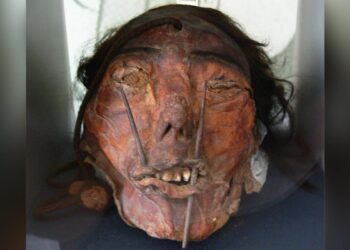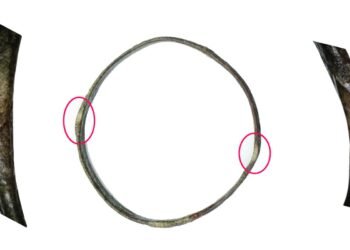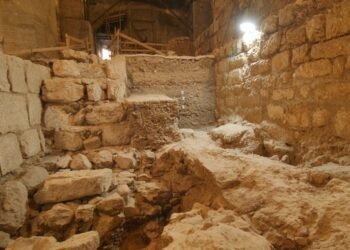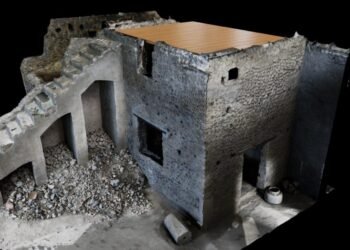A 2,000-year-old clay token unearthed by the Temple Mount Sifting Project has archaeologists pondering its significance in ancient pilgrimage practices.

The token, featuring a seal imprint portraying an amphora and an Ancient Greek inscription, is believed to have played a role in offerings exchanged during the Passover festival. Scholars speculate that these tokens may have been used by pilgrims ascending to the Temple to exchange offerings, possibly as a means to receive their offerings after payment.
The token, discovered over a decade ago, bears a resemblance to another clay token found in excavations near the Temple Mount, both displaying symbols associated with offerings at the Temple.
Dr. Leah Di Segni from the Hebrew University of Jerusalem deciphered the inscription, revealing the genitive form of the name Doulês, common in regions where Jewish communities settled during the Late Hellenistic and Early Roman periods.

According to the Temple Mount Sifting Project, the token’s design aligns with Mishnaic texts discussing offerings, indicating its potential use by Greek-speaking pilgrims, possibly including Jews from the diaspora. This interpretation gains support from the Mishnah tractate Shekalim, which describes a system of acquiring libations at the Temple using tokens, corroborating the function of these clay artifacts.
Further research by Dr. Yoav Farhi from the Hebrew University Institute of Archaeology examined multiple clay tokens found in Jerusalem, including those from the Temple Mount Sifting Project and other excavations. The composition of the tokens’ clay and their proximity to the Temple Mount suggest a direct association with Temple activities during the Second Temple period.
Despite these findings, numerous questions persist regarding the tokens’ origins and usage. Scholars are uncertain about who issued the tokens, how they were employed by pilgrims, and the significance of the wine jar symbol depicted on the Greek-inscribed token.
Launched in 2004, the Temple Mount Sifting Project aims to salvage archaeological artifacts from soil illegally excavated from the Temple Mount in Jerusalem. Over the years, the project has uncovered more than half a million artifacts.























